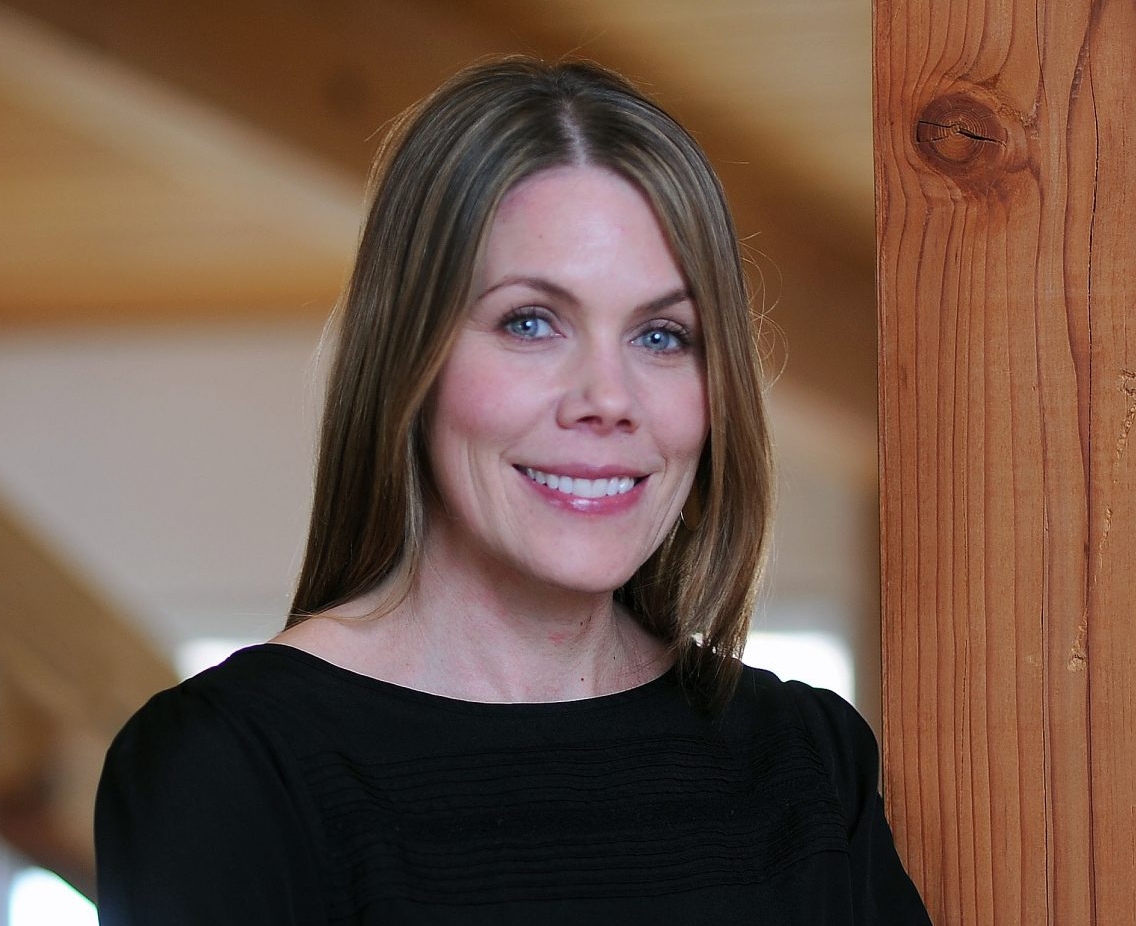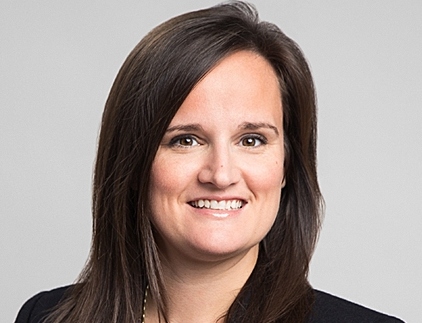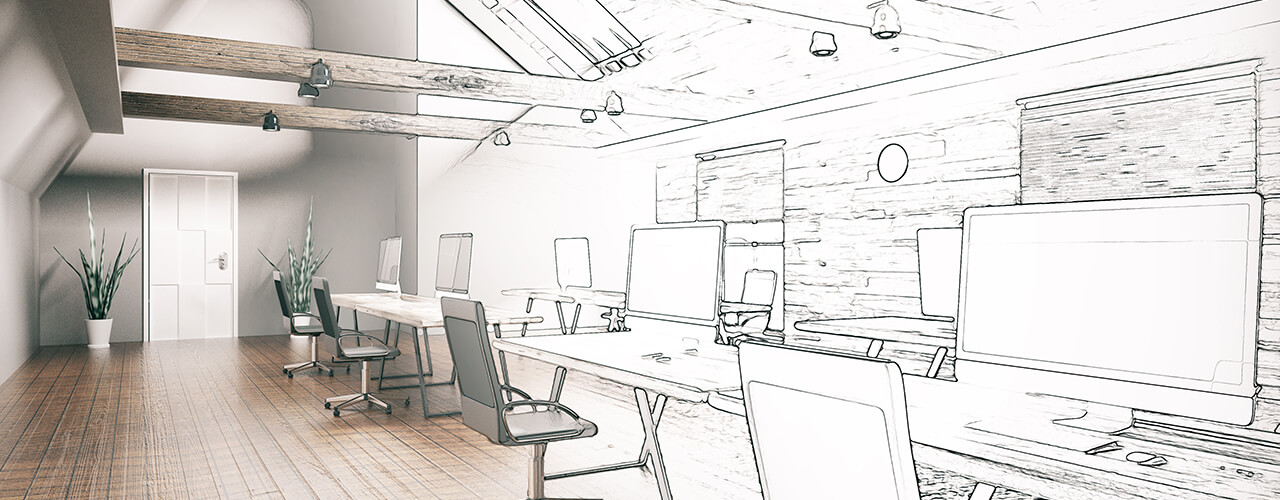It’s no secret that the COVID-19 outbreak took the entire world by storm. New regulations and restrictions on everyday life have taken their toll on people and businesses alike. In fact, the pandemic has completely changed the way we travel, communicate, meet, shop and experience life in general. But, how has it influenced the future of buildings and construction?
To find out, we spoke with several architects and interior designers to understand COVID-19’s consequences on the future of office spaces. Specifically, we asked how office spaces could be made healthier for employees; the techniques and materials that will play an important role in the future; and the next trends in commercial real estate interior design.
Meet our Experts

Meghan Barlotta
Senior Associate at KIMMERLE Workspace

Laura Bonucchi
Strategic Real Estate Advisor at Real Estate Bees

Mark Bryan
Futurist and Senior Interior Designer at M+A Architects

Lori Caldwell
Designer and Owner at Lori Caldwell Designs

Abbey Cwiek-Garrett
Principal at DLR Group

Jillian Dorell
Design/construction Project Manager at Larken Associates

Rae Duncan
Interior Designer at Rae Duncan

Paul Ferro
Co-founder and Principal of Form4 Architecture

Steven Kratchman
Owner and Founder of Steven Kratchman Architect

Angie Lane
Architect and Interior Designer at A.Lane Architecture

Megan Lantz
VP of Research & Development at HITT Contracting

KD Reid
Interior Designer at KD Reid Interiors

Geoff Ross
Real Estate Executive

Leslie Saul
President/Chief Vision Facilitator and Design Synthesizerat at Leslie Saul & Associates

Helen White
Co-founder and Interior designer at house of
How has COVID-19 changed architecture and interior design, and what will be the long-term results?
Meghan Barlotta
“ Our new focus is on higher levels of cleanliness. Formerly, we considered materials that would be durable and would stand the test of time in high-traffic areas. Now, we think beyond wear and tear, and consider features and materials that can minimize contact and ensure proper cleanability.
We know reducing contact, where possible, helps to mitigate transmission. Adding touchless technologies to entries and faucets is a small enhancement, but it will yield long-term benefit. We can also expect to see the addition of items like extra storage at workspaces. This will allow employees to clear desktops at the end of each day to ensure adequate cleaning and disinfecting takes place each evening.”
Laura Bonucchi
“ COVID-19 has changed the landscape of our living and working spaces in many ways. In commercial environments, sanitation and increased physical distancing of workers have become top priorities. As many workers are now working from home who previously were not, companies are realizing the benefits of this additional flexibility. Firstly, there is a cost savings in not requiring as much office space. It is predicted that, after the pandemic is over, many positions will continue to be work-from-home positions — or at least allow this flexibility several days per week.
For workers who are still in the office, more working space is required to maintain social distancing. Workplaces are being reconfigured to allow [for] more space between desks. Many companies are requiring work-from-home through mid-summer 2021, when vaccine distribution is expected to be available to all.
The long-term results of the pandemic will be an increased dependence on technology and utilizing remote workers. As we have seen, much can be accomplished through Zoom meetings, and the push to automate and streamline other work processes has never been higher. Even for medical workers, ‘teledoc’ services are often just as effective as in-person, patient-doctor meetings, while in the field of law, remote hearings are becoming the norm. Workers who previously used to travel for their positions will find, moving forward, that the need to do so is less imperative, as these meetings can also be conducted virtually.
Conversely, the field of residential design is seeing a huge boom of project requests, and DIY home improvement projects are at an all-time high. With people spending more time at home, and the functional requirements of our homes increasing — think home office, home gym and remote classroom — this has led many people to desire to update and improve their homes. Or, in some cases, move to a more suitable living space. Additionally, suddenly, the ‘open concept’ floor plan — which has become so desirable over the last decade — is suddenly far less so. When a family is all home together, with the parents trying to work and the kids trying to accomplish remote learning, the need for privacy and sound control have increased.
With changes that have been implemented due to COVID-19, there is the opportunity to have long-term effects on the improvement with how we live and work, with better air quality and cleanliness of surfaces being a way to improve our quality of life and also prohibit the spread of germs through the workplace.”
Mark Bryan
“ 2020 and COVID-19 will be known as the great accelerator. While highlighting gaps in our clients’ assets and needs, it has pushed forward a host of macro world drivers that have been waiting in the wings. With the pandemic came desynchronized living; fear factor of safety; prioritizing self, but strengthening the ‘we’; an intimacy and social recession; an understanding of our carbon footprint; recognizing diversity; and a hefty reliance on phygital [physical plus digital] living.
We have moved from speed to purpose; from apathetic to empowered; from individual to collective; from myopic to choice; from smart to helpful; and from mass-produced to curated.
With this, architecture and interior design will become the community bridge to foster inclusivity, empathy, empowerment, upskilling, wellness and regenerative designs/spaces/principles. The responsibility as architects and designers is greater than ever to create space for change.
We see four main forecasts for what our industry will be shaped by and look like in the next 10 years:
1. Mobilized: As people flex back and forth between rural and urban preferred living — depending on safety and comfort needs — cities become more dispersed, along with workplaces becoming more hub-based. With this, firms are completely mobile and working in a 24/7 modality due to a time-fluid society. This new mobility allows projects to be more ‘gig’ or subscription-based. Smaller projects will sometimes only focus on a specialized part before moving onto the next project. Subscription-based services and delivered offerings align with brands and partners for future projects and services. The demand for delivery will also create new, mobile at-home developments and micro-communities.
2. Resiliency Developers: In the wake of the pandemic, the mistrust of being in spaces that are packed with others changes how users interact with the environments and what they need to feel safe. This requires firms to rethink how to create social, flexible buildings rooted in safety. These adaptive buildings require new systems to be in place that are listed on public domains for users to see updates on before entering the building or centers. The activations within these buildings allow for quick changes or pivots to space to allow for new use. Examples will be seen as workplace spaces that are able to become production spaces. Other activations would allow the sealing of a building for an internal sanitization. These buildings are deemed resilient or pandemic-prepared. These new design principles also incorporate ways to build resiliency within the users by requiring spaces for mental wellness — both during times of crisis and everyday living.
3. Sensorial Enablers: In contrast to touchless experiences brought on by the pandemic, those that are sensorial will become a priority. This elevates experiential design and requires behavioral psychology to allow for these experiences to be inclusive of all populations. Those experiences that bring joy to daily ritualized spaces will be used as a metric for productivity and company culture/engagement. Companies that include sensorial experiences will be more positively received by their clients and staff. Immersive realities will be curated and tailored to individual needs through augmented intelligence.
4. Ecological Producers: Self-sustaining architecture rises as a request from future clients who have had to pivot during the pandemic. This requires the use of materials that can perform self-care and allow for new, energy-generating practices to be incorporated. These new ecosystems update sustainability practices to become regenerative and allow for new off-grid/siloed certifications to be applied. These self-sustaining buildings are also required to give developers more control over the building’s performance. Part of self-sustaining is preparedness for climate disaster and for reusing waste to create replacement materials for repair as the building ages. Included in these new buildings are conditioned outdoor spaces that allow for flex indoor/outdoor use. Clean design principles are also employed to promote safety and wellbeing.”
Lori Caldwell
“ Before COVID-19, most commercial spaces were focused on how many people we can fit into each space. But, with the pandemic, we now need more space between people. Shopping areas will need larger aisles; restaurants place tables farther apart; and, long-term, we will need larger spaces even at a lesser capacity.”
Abbey Cwiek-Garret
“ The pandemic has fundamentally shifted the reasons we want to meet in shared spaces, whether it be the office or a retail establishment. We want destinations to gather, to collaborate in, to have intentional in-person contact … If we’re needing quiet focus or we know exactly what item we’re looking to purchase, we may still choose to stay home to do so. But, people still crave constructive feedback [and] creative brainstorming and want to broaden their horizons with experiences, and that will still occur in shared space. The perspective shift is that those spaces will now be crafted around safely and flexibly interacting as the main objective.”
Jillian Dorell
“ When designing, we always keep in mind aesthetic and function for all aspects, from overall structure to a wall covering detail. One thing that has lacked in the past that is now becoming more prevalent is how people function in the space cleanly. The COVID-19 pandemic has forced us to focus on new elements that might have been overlooked before or previously considered an accessory instead of a necessity. We now have new terms, such as ‘social distancing’ and ‘high-touch surfaces,’ which will play a much greater role in design from here on out. HVAC system upgrades with greater fresh air distribution and blue-light, germ-fighting technology; surfaces with antimicrobial properties; and designed locations for hand-sanitizing are just a few properties I project to be at the forefront for the future of design.”
Rae Duncan
“Certainly, people are spending way more time at home. Your interiors are all you see all day, so it matters. People are improving their homes in vibrant and interesting ways. Commercial design for my firm has declined as many industries are in flux, but homes are getting larger and more luxurious. People are building more office space into homes, and they’re spending money on bigger homes outside the city. I think people want more unique, colorful, interesting spaces. The amount of time spent in the home is immense, and the normal neutrals don’t seem to do it for clients anymore.”
Paul Ferro
“As architects and interior designers, we are seeking new, performance-driven solutions that address all pertinent intellectual and emotional issues that may arise as we consider reopening. With new spatial, furniture, material, technological, procedural and behavioral solutions applied to the workplace, the spread of COVID-19 can be seriously curtailed, allowing us to reopen the economy and reengage the workplace. However, individual employees’ safety concerns will be the most difficult factor to address upon the return to work. Once quarantine orders are lifted, not all employees will eagerly rush back to the activities and places that occupied their lives before COVID-19. Government and corporate regulations will continue to instruct architects and design industry professionals to create solutions for those concerns.”
Steven Kratchman
“Conversions and adaptive reuse projects have really grown in New York City and the Hudson River Valley, up through the northern suburbs. This region has been on the leading edge of that trend nationally.
Before it affected office buildings, it began with homeowners that had to quickly turn their houses into their primary business locations, plus using them as their children’s schools, then functioning as their off-hours relaxation spaces. That’s a significant change in use, and people are growing their homes out and up to accommodate this increased need.
It has allowed homeowners to rediscover their communities, too. For example, residents in the Hudson River Valley now see the region as transportation-friendly; rich in food and wine culture; and very outdoors-oriented, with lakes, mountains and recreation easily accessible. Additionally, they view the existing residential and commercial building stock as more affordable to grow out and up, versus new development.
People are also putting more focus into their outdoor spaces at their homes, extending indoor amenities out, such as seating, fireplaces and more. Existing properties in the suburbs already have access to the outdoors and can be exploited very easily in terms of front, side, and rear yards and roofs.
This ‘out and up’ expansion mindset has extended into office and commercial space, notably seen where restaurants have extended out onto sidewalks or parking lots. Office buildings, social clubs, hotels, and multi-family buildings are focusing more on renovating their facades and common spaces to create warmer and more welcoming spaces that are significantly refreshed — essentially turning older or ignored spaces into areas that change the personality of the buildings.”
Megan Lantz
“Through our work with several clients nationwide, we have seen the desire for immediate changes in the workplace allowing for appropriate social distancing and more individual space for employees. While many of these measures are temporary and most clients are moving forward with designs without COVID-19 at the forefront, we have seen a trend where large collaboration and meeting spaces that traditionally have held several hundred people for town hall meetings are no longer a priority.”
KD Reid
“COVID-19 has impacted the architecture and design industry by changing the way we plan for the future. Trade shows have been impacted with in-person experience to virtual showrooms and online product launches.”
Geoff Ross
“We don’t know how it has changed architecture/interior design and aren’t going to know until we all start going back to work. There is much discussion about it at this point, but very little actual, considered uptake and practical application. With office hubs like New York City still experiencing 10% to 15% tenant occupancy, the world is still wide open.””
Leslie Saul
“The bad news: Many firms that specialize in workplace design have been slowed to almost a standstill. Although we have one new expansion project, we also have several downsizing projects. Many businesses have seen the success of remote working and believe they will not need big offices that are mostly empty. I believe that this is short-sighted.
The good news: Fewer people going into the office takes pressure off transportation systems and is good for reducing carbon emissions. Also, in firms where they insisted on 100% attendance, people will now get more flexibility about where they work.
That being said, there are downsides to remote work, such as security issues, ergonomic issues, distractions, etc. Who pays for improving working conditions at home? Young people in studio apartments and parents of young kids may not have ideal set-ups.”
Helen White
“COVID-19 has meant that we are going to be using our offices very differently in the future. With a lot of big businesses predicting that 50% of their workforce will be working from home at any time, this means that a trip to the office suddenly becomes an occasion and a treat. A trip to the office is not a time to sit at a solitary desk in silence, but to interact with our co-workers. This means banks of desks and their lighting schemes are becoming redundant. Many offices have recessed LED lighting to provide consistent levels throughout the space. The light is often bright and far enough above head height to reduce screen glare and eye strain.””
How can architecture or office design supplement efforts to contain the spread of
COVID-19 and make workplaces healthier overall?
Meghan Barlotta
“During the warmer months of the pandemic, we saw that being outside allowed us to gather with less concern for viral spread. Even before COVID-19, design trends centered around access to natural light and windows to help alleviate sensory deprivation and encourage creativity.
Beyond space planning, which optimizes access to windows, we can anticipate an increased focus on the development of outdoor meeting areas and workstations. Formerly, outdoor spaces were planned around lunchtime or break time activities. Now, we are seeing companies and property owners engage in projects which create spaces for employees and tenants to conduct meetings outdoors. Biophilic design elements will also help promote a connection with the natural world and create a balanced work environment when the weather does not permit us to utilize outdoor spaces. Biophilic concepts include green walls with plants; use of natural materials, like wood; indoor water features; and lighting that mimics daylight.”
Laura Bonucchi
“ With regards to the built environments that we live and work in, improving air quality and ventilation are of top concern with stopping the spread of this deadly virus. Increased ventilation can be accomplished by upgrading ventilation systems; increasing the percentage flow of fresh outdoor air through the ventilation system; and also filtering germs from recirculated forced air. Although, this is often not an inexpensive upgrade for workplaces or schools to make, as it often will require an entirely new system to be put in place.
Interestingly, there is increased research around the use of UVC radiation to sterilize air and surfaces. It is known to disinfect air, water and nonporous surfaces. For decades, this type of light has been used to reduce the spread of pathogens. These are often referred to as ‘germicidal’ lamps. They can be introduced inside of air ducts in commercial spaces, with limited use for homes. It is important to note that direct exposure can be dangerous and different wavelengths have different results.
More information can be found at: https://www.fda.gov/medical-devices/coronavirus-covid-19-and-medical-devices/uv-lights-and-lamps-ultraviolet-c-radiation-disinfection-and-coronavirus. Additionally, due to the pandemic, there is even more demand for durable commercial products that can withstand heavy cleaning products, including bleach. In projects, I am seeing an increased demand for bleach-cleanable fabrics. Plexiglass dividers have also become the norm in many work and commercial spaces.”
Mark Bryan
“ We call them the three Cs: choice, comfort and control. Implementing these three Cs creates insulator spaces that are the ways to successfully return to the workplace, and to enable those who interact within the workplace to be empowered and build resiliency.
1. Choice: We have all gained a great insight into our personal needs, whether that is spatially, emotionally or physically. With most companies and employees reporting they want a blend of work from home and return to work, COVID is allowing designers to create spaces that allow for social distancing in the short-term, and then needs-based work in the long-run. Accelerated to the forefront due to COVID-19, spatial choice will be agile and task-/needs-based working. These spaces allow users to choose when and where to work based on their needs. This means they can choose what is safe for themselves at that time. The difference now is that this choice will need to be connected to a cultural hub as workers are now used to home comforts and choosing when to work based on their asynchronistic schedule. The hub creates a need to still come into the office. The hub allows for siloed distribution of the office so that people can work closer to home as their proximity to their home hub will feel safer and more easily accessible. This is distributed working. Design and architecture’s role will be the facilitator to create multiple venues, with a connective tissue of the company’s values to still attract and retain new talent.
2. Comfort: COVID’s effect on the workplace is also emotional. Like it or not, we all have experienced trauma, and for employees to return to healthier work lives, their spaces need to provide them tools to deal with the fallout. Global fears of safety and security will need to be addressed, as well as creating spaces that provide communal care. Recognizing design and architecture will need to facilitate systemic transparency from the top down — transparency with where the company stands, what they are implementing and why. Using materials that use evidence-based design principles to calm the central nervous systems, providing respite spaces to help employees build resiliency, and values-driven messaging all become part of a space’s safety messaging that provides comfort. In essence, spaces that allow for the recognition and identity of their fellow employees’ and their own needs.
3. Control: COVID has forced the office to become much more touch-conscious. Going forward, we will want to control who touches our desk or tools. We will want to have a log of when spaces were last used — which room monitoring and sensors that are already deployed can provide. There will also be helpful devices that keep us safe by allowing us the control to clean when we want to. Lobby spaces in the new offices of the future will become more expansive in their role, rather than being relegated to waiting rooms. Lobbies will become spaces for sanitization through new light fixtures and HVAC devices that clean the furniture and air.”
Lori Caldwell
“ Even before COVID-19, there was always an issue of cleanliness in offices. When one employee is sick, it tends to run through a workplace quickly. With COVID, we are seeing smaller groups in meeting spaces [and] more time spent in individual offices. But, with all of that isolation, design needs to focus on creating warm and inviting spaces. Workplaces will need to focus on natural light and comforting design elements to ensure employees do not feel the harmful effects of isolation and the lack of human contact through the pandemic. We can also use materials that are easily cleaned and hold up to the constant sanitizing practices.”
Abbey Cwiek-Garret
“ One way is to be more transparent about the health of the space with users by tracking and sharing meaningful real-time building data. Occupants will be looking for information on how the building/space lives and breathes, and how it adjusts to maintain those healthy levels if outside influences threaten that balance. Educating users on their wellbeing in their space empowers them to set that expectation and make decisions based on that data. Embracing the idea of less-enclosed spaces and more ‘zoned’ open studios then can evolve as needed, knowing that people who want to return to work will have more in-person contact with one another.”
Jillian Dorell
“The trend for office settings over the last few years has gone from tall-walled cubicles to shared working spaces with minimal to no division between them. There are ways to create division between occupants without actually having to construct walls between them, so we are going to see some very creative ways to achieve this separation in the future. Glass is a great way to physically keep personal space divided while visually creating a communal space, and vinyl graphic designs are so advanced now that an entire space can be centered around these elements.
When designing our new office amid the outbreak of COVID in March, I made sure we had a ton of glass for light and communal engagement, so it did not have a ‘fishbowl’ feel. I worked with my signage company to come up with a design that tied together all elements of the space, making the glass and graphics feel like a design element, instead of an afterthought. I installed four workstations that incorporated some higher walls mixed with some lower walls and glass to make it less secluded and more inclusive, while maintaining social distancing guidelines.”
Rae Duncan
“Ventilation and windows are essential, as well as cleaning surfaces and air. I think large office buildings may turn to more small, satellite offices and home-based work to contain exposure and allow small teams to continue working together. A smaller, contained office is much more manageable and safe in terms of infection and spread. We’ll see barriers and bubbles of teams working in office space together, with separate bathrooms and exits for each bubble.”
Paul Ferro
“Companies can institute rotating shifts between coming into the office and working from home to reduce the number of people in the office. Supplemental design ideas: Reduce workspace density with wider circulation, greater separation of workstations and one-way foot traffic. Include barriers to shield workstations; return to high cubicles; eliminate hot-desking. Separate workstation rooms with walls, glass, hygienic washable curtains, etc. Conduct meetings with video conferencing from an assigned desk or home (or at outdoor meeting spaces, where practical). Run HVAC systems 24/7, if possible; keep relative humidity at 40% to 60%; use bipolar ionization systems; remove hand dryers from restrooms. Improve lighting solutions, such as UVC lighting to sterilize air; germicidal ultraviolet disinfection lighting for surface-sensitive areas, such as fitness equipment and food-preparation areas; increase interior sunlight for biophilic wellness benefits and natural disinfection. Touchless (motion- or voice-controlled) doors, elevator controls, toilet partition doors, plumbing fixtures, hygiene stations, light switches, etc.”
Steven Kratchman
“Architects have spent significant effort in focusing on the needs of business owners to get their workforces back in the office, while meeting perceptions that their workspaces are safe. I’ve seen an upswing in the desire to accommodate technology that allows more face-to-face conversation, while lessening in-person interaction — such as conference facilities that allow distancing, yet the ability to interact as teammates and clients.
Some open-concept offices are transitioning to transparent dividers that still allow the interaction of people and reintegrating teamwork. Window space is also being better utilized to help bring the outside in to a better degree. Some companies are opting to expand their space to allow [for] more social distancing, while maintaining the same headcount in their offices.”
Angie Lane
“Office design can supplement the spread by revisiting spatial layouts to obtain spatial distances, as well as create walled niches for individuals (whether they are transparent for non-visual separation or solid). Installing shields at points of customer interaction is important, as well. Thinking of these and designing these as permanent installations is a better use of upgrade investments. A thoughtfully designed intervention can enhance the brand interaction instead of just being a Band-Aid.”
Megan Lantz
“To make workplaces healthier overall, it’s ideal to create a natural flow of individuals throughout the workplace. Additionally, offices can select antimicrobial materials and touchless products, when possible, and install new HVAC systems, which ensure the consistent flow of clean air throughout an office space. Incorporation of outdoor spaces is also key, as fresh air has been proven to provide health benefits and also reduces transmission of viruses, such as COVID-19.”
KD Reid
“To maintain healthy work environments, offices will have to be creative in their work environment — from allowing employees to work, as well as establishing new zones and boundaries in the work environment to maintain safety.”
Geoff Ross
“The obvious ways to make the workplace safer are no different than what would be practiced everywhere — masks and social distancing. The real problem comes from the number of people in an office and how long they are there. As we have all seen, people are sloppy about masks. Combined with questionable airflow, it is not an ideal situation. Ask yourself: Would you want to sit in a restaurant for eight hours? Offices also need to be doing some basic technical things:
- Keep the humidity up. This gets science-y fast, but humid air inhibits the ability of viruses to float around.
- Use a good-quality filter on the HVAC system that catches most aerosolized droplets. MERV13-rated are perfect. It’s like an N95 mask for your HVAC system.
- Get more outdoor air in the system. There are a lot of codes that dictate how many air changes must take place in a space in an hour and how much of that air must be fresh, outside air. It’s a surprisingly low number for offices. Increasing the outside air being put into the system dilutes any virus building up in a space from an infected person”
Leslie Saul
“Healthy workplaces are more important than ever. Many buildings have improved air filtration systems and fresh air systems. The most important element is that remote work success may encourage people who don’t feel well to stay home!
Also, the completely open-table concept for work is probably over, and cubes with glass partitions will probably be back in order to contain airborne diseases.”
Helen White
“Office designs of the future will see the demise of the traditional workstation toward multi-purpose, activity-based workspaces. Hybrid spaces will be used for shorter meetings, as well as social breakouts, and this will reflect across both the nature of meetings and how they are conducted, as well as having a direct impact upon how working areas are built alongside one another. With more space to move around and conduct shorter meetings in more open, fluid spaces, this will not only increase our step count in the office and contribute to overall health, but it will also mean that there is less time spent in single, sedentary positions”
What do you think will be the main trends in commercial interior design in the coming years?
Meghan Barlotta
“Collaborative spaces and areas that promote connectivity are not new to design. However, they were not always viewed as a necessity. When working remotely, we lose the contact that occurs organically within the office space. This loss of connection impacts many aspects of the organization community, which stem from mentoring and problem solving to idea sharing and creative development. To this end, we can expect to see space planning that continues to encourage people to connect in formal and informal spaces as we value this office feature now more than ever. We will see renewed emphasis on gathering spaces like coffee bars, lounge-like breakout areas, conference spaces that integrate virtual meeting platforms, and space plans that direct traffic flow to highlight these locations”
Laura Bonucchi
“There is no doubt that the pandemic will have a lasting impact on the types of products used in commercial spaces. There will continue to be an increased demand for bleach-cleanable and highly durable products, which can be continually sterilized. I do think that the pandemic will have a lasting impact on all of us who have lived through it, in how we think about our proximity to others and the spread of germs. I often wonder how many ‘germophobes’ this pandemic has created — if you weren’t one already!
In terms of trends with interior design, the mid-century modern influence continues to be popular with furniture and lighting, and has a fresh new take for the 2020s. Industrial components of design are still on the upswing, such as exposed ductwork, metal seating and light fixtures inspired by lead pipes.”
Mark Bryan
“There are so many and I’m happy to elaborate on each one as you need it. In the meantime, here is a topline list: wellness; safety needs; drive-up culture; augmented intelligence; incorporating the fourth industrial revolution; home comfort at work; soft tech; regenerative; material reuse; slow offices; tech-free; product diversity and co-creation; personalization; upskilling and coaching spaces; outside offices; sidewalk spaces; mission-based spaces; carbon neutrality; [and] liminal spaces”
Abbey Cwiek-Garret
“We’ve always talked about designing for flexibility, but now, more than ever, we’ll see phased approaches to space and build-outs, designing infrastructure preemptively in anticipation of future possibilities. If tenants and owners are going to take a chance on brick-and-mortar growth, they’re going to want to make sure they’re thinking 10 steps ahead of where they were pre-2020. I believe we’ll see more furniture solutions used to solve programming challenges, as well … more commitment to agility.”
Jillian Dorell
“Specialties such as hand-sanitizing stations, cleaning equipment and touchless functions of ‘high-touch’ areas will be incorporated into the design, instead of being an after-thought application. It is hard to find these types of accessories that are a designed to be aesthetically pleasing, rather than an after-thought added on top of an existing design. Bradley is one of the latest companies that has focused on the design aesthetic of the hands-free faucet and soap dispensers. They provide a great line of different finishes and styles to accommodate any design, instead of the standard polished chrome finish with standard style that is found everywhere. I am hoping to see more products rolled out as there will be a greater demand for these items.
Hand-sanitizing is one of the most important practices that will continue into the future long after the virus is contained. I sanitize my hands constantly, especially in public spaces, because you do not realize how many germs are picked up by a single touch. Regular handwashing and sanitization will greatly decrease transmission of any illness, not just COVID-19. To further reduce transmission, high-touch areas like elevator call buttons, doorknobs, escalator rails, reception desks and touch-screen directories will require some type of sanitization station in close proximity from here on out. Being able to work sanitization stations into the overall design of a space — instead of just placing a dispenser on a freestanding pedestal in the center of the room — is what I hope to see in future product rollout.
On the mechanical system side, I am sure we are going to see new rules and regulations written into codes for fresh air intake, air circulation and increased germ-fighting technologies set into place.”
Rae Duncan
“I think owners and designers will always keep the virus in the back of their minds. They will value ventilation, more interior space and more exterior space. This will not be the last pandemic, and I believe the problems that arose for many businesses will be designed for in the future. Flexible interiors that can adapt and change for unexpected events are essential. Brainstorming potential problems and implementing solutions during the design process will be essential.”
Paul Ferro
“Proposals to combat COVID-19 (and any future viruses) are based on increasing separation and reducing contact between people. New workplace questions revolve around finding the right balance between interaction, separation, safety and privacy. Another major, yet overlooked, part of the workday involves the journey between home and office. We can employ many solutions for lowering the risk of viral transmission in the workplace, but how can we mitigate contamination for the millions of people who commute each day by public transportation or touch surfaces in ride-share services?”
Steven Kratchman
“Outdoor spaces that are a seamless extension of the indoor design will be a prime amenity, whether it’s at an office building, restaurant or residence. Our firm has been incorporating spaces that previously weren’t ‘planned’ for use, such as rooftops, courtyards, backyards and more.
The design feel of the interior space will continue to be extended to the outdoors space as it opens up more space. The feel of airiness and ability to social distance are the top needs in these trends, while extending the feeling, look and even brand of the space.”
Angie Lane
“I think the main trends will be a bit of downscaling and increased flex space. With employers and employees realizing that work can be done outside the workplace, thought will be given to ways to best use or reorganize the existing space for a smaller in-person workforce. I also think businesses will need to think outside of their own use of their space for increased flexibility. Can their space be used for community purposes? Can the space be used to accommodate flex work styles within their company?”
KD Reid
“Bold and organic design. Commercial spaces are central and public spaces where you can have an enormous impact [and] convey a mood to a particular audience. As we see more sustainable design introduced to these environments, we will see more nature incorporated in spaces, such as living green walls.”
Geoff Ross
“The trends in commercial design will be about providing people with the space to work. We have all seen that the remote nature of office work is fairly successful. What is missing is the efficiency of fewer interruptions from family, kids, roommates, pets, etc. The office is going to transform from a place that you need to go, to a place that you want to go. The driver of that want is what is going to change. In the past, it was amenities like an in-office barista, or a lounge space or — way back when — foosball tables. It is going to become a place where you want to see people; where you want to feel safe while you are seeing them; where you have the room and the focus to do work. [A] building space of safe collaboration with a casual feel is what will be on point.””
Leslie Saul
“I believe that people will come to work for social reasons and for deadline-driven teamwork reasons.
I’m concerned about the unassigned seating trend that will disconnect people from the office. However, I expect more large team rooms and war rooms with desks along the walls with mobile whiteboards in the middle, so that people aren’t breathing on each other, but they are still in proximity to each other. This will build connections with each other and with the company, while keeping people safer.
I also predict affinity seating rather than team seating for generally placed desks. That means people sit with people who share their interests, such as knitting, beer-brewing, fishing, etc.”
Helen White
“A fresh and closer connection to nature through biophilic design looks increasingly likely, and we would expect to see more atriums with natural greenery being built into new office designs, but also integrated into existing spaces, where there is simply less of a desk requirement than previously so. Low-energy technology, such as advances in LED, mean that environmental solutions will continue to be at the forefront of commercial interior design. Expect to see buildings shape their layouts based on employee data, with more usage of footfall measurement technology to assess whether certain spaces are being over- or underused.”
What construction materials and techniques do you think will play an important role in the future?
Meghan Barlotta
“Creating spaces that can be properly disinfected — yet still have a home-like and inviting environment — will be essential. Materials with antimicrobial properties or that are highly cleanable will continue to offer long-term effects beyond the pandemic. For example, the rise in use of materials like luxury vinyl tiles started prior to the pandemic. Now, such materials will be considered for their hygienic properties and not just their aesthetic appeal and durability.”
Laura Bonucchi
“In the future, I expect there to be an increase in the use of permanent modular construction, or PMC. We have seen it done more often with home design. However, I expect that it will gain popularity in commercial applications. It is a more sustainable option, utilizing lean manufacturing to produce entire building components or sections off-site. With this method, there is a higher level of quality control and considerably less waste is created, making it a ‘greener’ alternative.”
Mark Bryan
“There are three main trends for materials and techniques to consider: cleansing, regenerative and haptic. Cleansing might be the most intuitive, with materials and systems providing self-cleansing offerings to reduce the need for chemicals. Regenerative materials and systems can allow for reuse of old or worn-down materials to be converted into new so that waste becomes useful. Haptic materials and techniques will address our sensorial needs with immersive spaces. This could even extend into visual and auditory touch as a sense to be incorporated and explored.”
Lori Caldwell
“We will be using more healthcare-type of materials in all commercial projects, such as antimicrobial solid surfaces.”
Abbey Cwiek-Garret
“We’re already seeing an influence from certification programs such as WELL, LEED and Living Building Challenge, pushing our material strategies further and requiring much deeper dives into sustainable choices. I think that is here to stay, and manufacturers are feeling the pressure from the industry to adapt to make better and healthier production choices. Post-consumer waste-derived products will continue to be relevant as we strive to reduce our waste and our footprints. We’re also seeing influence from the healthcare industry, in terms of cleanability and the increased level of durability that comes with more rigorous sanitation practices. So, you sometimes run into this challenge of reuse of material manufactured with fewer chemicals and fillers, but then balancing that with the fact that the end product needs to hold up to multiple wipe-downs a day, depending if it’s high-touch or not.”
Jillian Dorell
“There are a few finish manufacturers for quartz, wall covering and flooring materials who have products with antimicrobial material that we are going to see an increase in use. There are many hospital-grade items that already have a lot of these properties that we will see rolled out into other markets. The healthcare field has always prioritized fighting germs and illness, and I believe that we are going to see a lot of these finishes enhanced with design and applied in sectors such as hospitality, office and other commercial spaces. While these antimicrobial products do not kill bacteria and germs, they do help to prevent the spread.”
Rae Duncan
“The trend will be toward commercial, cleanable surfaces and materials. I see much more stone and synthetic materials being used. Ventilation and cleaning are now paramount. From wallpaper to carpet, everything needs to be more easily cleaned and disinfected. Synthetics and composites are already very popular, but I would expect use to increase even more.”
Paul Ferro
“Look for increased use of non-porous, durable, antimicrobial smooth surfaces; coated, durable fabrics; and cleaning-friendly materials. An emphasis on biophilia will place more importance on outdoor workspaces (flexible/movable furnishings, adding power outlets and expanding WiFi coverage) and healthier indoor environments — possibly plants that absorb carbon dioxide, increasing efforts on window size and placement to increase natural light.”
Steven Kratchman
“For renovations, we see the need to find materials that are either from the original source, such as stonework, or reusing currently incorporated materials in new ways — such as original wood being refinished and incorporated into new facades and entryways. Existing buildings are frequently retrofitted with state-of-the-art environmental systems, too.
For office and commercial properties, the use of glass will grow to avoid occupants’ feelings of isolation and bring the outside in. This will provide more interaction indoors — [while] still providing a broader feeling of social distancing — yet welcome people back to their workspaces with a new, improved, energized feel.”
Angie Lane
“Ventilation and natural air circulation will be key. Antimicrobial finishes and no-touch hardware features will also be increasingly in demand. I think interiors will take on greater importance as the use of Zoom continues and businesses realize the importance of a visual presence in the video world.”
Megan Lantz
“Due to COVID-19, I expect to see more interest toward using antimicrobial products and materials; technology that supports key- and handle-free entry; touchless surfaces; and anything that helps employees avoid direct contact with a surface. Additionally, I expect projects to push the boundaries of construction techniques and opt for more off-site fabrication.”
KD Reid
“Sustainable materials that can be recycled and reused as we plan for the future and think about eliminating waste and reusing materials, such as bamboo, cork and even reclaimed lumber.”
Geoff Ross
“Construction materials are not likely to change much in the near future. Steel, concrete, wood, glass — these are here to stay. Finish materials will change with the style and trend moods of the design world. Softer, warmer, more comfortable and soothing materials will be in the near future.”
Leslie Saul
“Although there is a focus now on products that can withstand frequent/daily disinfecting, I wonder if folks will get complacent after COVID gets minimized. In general, designers who work in commercial projects utilize durable materials that also look great.”
Helen White
“Self-cleaning concrete was recently reported in ACS Applied Materials & Interfaces. This material is strong, soundproof and heat-resistant, allowing liquid particles — such as milk or coffee — to simply ‘bounce’ off it. These types of ‘hydrophobic’ materials will become more commonplace — both from a cleanliness and sanitary standpoint.”
How will the buildings of the future combine design and function?
Meghan Barlotta
“We are challenged to react to the new safety guidelines, but it does not need to be at the expense of design. Design can be the bridge between creating a safe, yet stimulating and inviting environment. A visually appealing space can greatly impact productivity. Strategic space plans will consider appropriate social distance, incorporate outdoor spaces and encourage connectivity.”
Laura Bonucchi
“Buildings of the future will combine design and function by increasing multi-use spaces and informal meeting areas. An example of a multi-use space would be an office cafeteria with furniture, which can be reconfigured for different meeting types. Or, walls with screens that can function as a television during lunchtime, or a projector when used in a business meeting. Informal meeting areas in workplaces are also high in popularity so that workers can get away from their desks and pop in for a quick project update with their laptops. These take on the look of more of a comfortable lounge with sofas and upholstered chairs, versus a more formal or stuffy meeting or conference space. Also, an increased need for areas of refuge — including private booths — offering workers the opportunity to have a private phone call, while still remaining close to their workspace, and not distracting others with these conversations.”
Mark Bryan
“We see them as becoming connective collectives — moving beyond single use to adaptable pivot spaces that bridge mixed-use, spatial typologies and meld them into one. COVID brought on the onset of the ‘dark space.’ Dark stores, dark offices, empty entertainment venues, silent streets and more have become a necessity due to the pandemic. Single-use spaces will be thought of as risky, whereas connective collectives allow for a space to be used in multiple different ways throughout the day. They can be offices during the weekday, retail at night and community centers during the weekend day. This can also allow for mobile healthcare to come to the community or your local delivery platform to have a more engaging presence. These can occur in large, sioled buildings; or in neighborhoods; or as adaptive reuse of, now, dark spaces.”
Lori Caldwell
“The idea of combining design and function is nothing new and will always be at the forefront of design. The key difference here is how our needs have changed, and that the function of spaces has evolved with the pandemic. We currently need more large, open spaces; dividers between dining tables; [and] larger aisles in shopping areas, and that will continue after the pandemic, most likely due to a general idea that it will be safer moving forward regardless of the status of COVID-19.”
Abbey Cwiek-Garret
“In some ways, we design with an unknown future in mind, planning ahead for major shifts, foreseeing infrastructure needs to diminish costly upgrades at a later date. And, we must design in a way that feels intentional at any stage or phase of space development. I think we’ll also see an emphasis on functional and safe protocols — such as handwashing, temperature checks and spaced-out programs — start to become hospitality-driven and part of the way we enter into spaces. We will see these experiences designed with people’s mental and physical wellbeing at heart, making the steps enjoyable as a daily ritual to instill confidence, and these to-dos will feel less like a sterile, purely utilitarian act.”
Jillian Dorell
“When designing a space, it is important to always factor in design and function. The design of the space is greatly impacted by the function or what it is used for. We are forever evolving and looking to continually improve the everyday functionality of our designs. You can take a building designed 100 years ago and it will not be as modernly functional as a building designed five years ago. There is nothing wrong with either design. As we learn more about practices, materials and use, we apply them to how people function in a space.
There is a program called WELL that focuses on how the people who occupy the space function in the space. Like the LEED Certification, which is about the building wellness for the environment, the WELL building certification focuses on the wellness of the occupants in the building. I am excited to keep learning more about the WELL practices and incorporate them into all of our properties in the future.”
Rae Duncan
“The functions of future buildings will need to be adaptable and flexible for a variety of situations and use cases. Space is going to be huge. Providing more space per person than we have in the past solves a lot of problems — providing more bathrooms; more exits; designing with elements and materials that allow for more sterile environments. More materials will be developed that are still beautiful and cozy, but demand will grow for items that look nice, but are also durable and easy to maintain.”
Paul Ferro
“Remote work has ingrained employees in comforts and conveniences of home. Designers and employers who can make the workplace feel more like home — while finding the right balance between interaction, separation, safety and privacy — stand to be the most successful..”
Steven Kratchman
“There is a growing interest within municipalities to allow changes of use. These ‘heart transplants’ for buildings can be seen in the commercial-to-residential conversion demand that has been one of our focuses during the pandemic.
We’re seeing New York City support this adaptive reuse trend through zoning changes that allow for these conversions, and I encourage other cities to consider these changes. It brings new life to properties that may be ‘tired’ or feeling old, and can significantly improve a neighborhood.
In Manhattan and Brooklyn, the city is encouraging this by allowing the incorporation of ground-level retail space in these conversions, which grows the sense of a community. We are seeing this, particularly, in Manhattan’s SoHo and TriBeCa neighborhoods, as well as in Brooklyn’s Greenpoint and Williamsburg.”
Angie Lane
“Design will be utilized to create multi-functional spaces with more of a focus on a symbiotic relationship with employees, as well as the community and urban environment.”
Megan Lantz
“Moving forward, there will be an increased focus on access to fresh air and outdoor space when it comes to corporate offices. This affects the overall design experience of a corporate space, so we believe we will see more outdoor conference rooms, walking loops and fresh air workstations to support everyday use. Time outdoors has been proven to improve overall health, as well as reduce the transmission of viruses.”
KD Reid
“The building of the future will be inspired by work and live environments. Communities will interact in multi-use spaces.”
Geoff Ross
“The recent trend of unique forms with more outdoor space will likely continue. There are several projects currently underway on the office front that incorporate large areas of outdoor space — conversion of roofs to roof decks in existing buildings and wholesale building as planting programs, such as the Spiral in NYC or the new Amazon HQ in Arlington. Revitalization and repurposing of suburban campuses to provide non-commuting space to employees is also on the horizon.”
Leslie Saul
“This is what most architects and designers in commercial projects have been doing for years! Designs go in and out of style, functions change, priorities change [and] commercial real estate markets swing from landlord-driven to tenant-driven. I’ve been in this business for 40 years, and I can tell you that we architects and designers will solve these challenges as they arise with style and practicality.”
Helen White
“Functional doesn’t have to mean aesthetically limited. Digital, all-electric infrastructure embedded into future building design actually means there will be more room for design flourishes and functional accents. Buildings of the future will fulfill both environmental and emotional needs, so look out for more vertical farms that produce food for employees and also operate as social spaces.”
If you found this article useful and informative, please feel free to check out our Expert Insights & Roundup Series.



